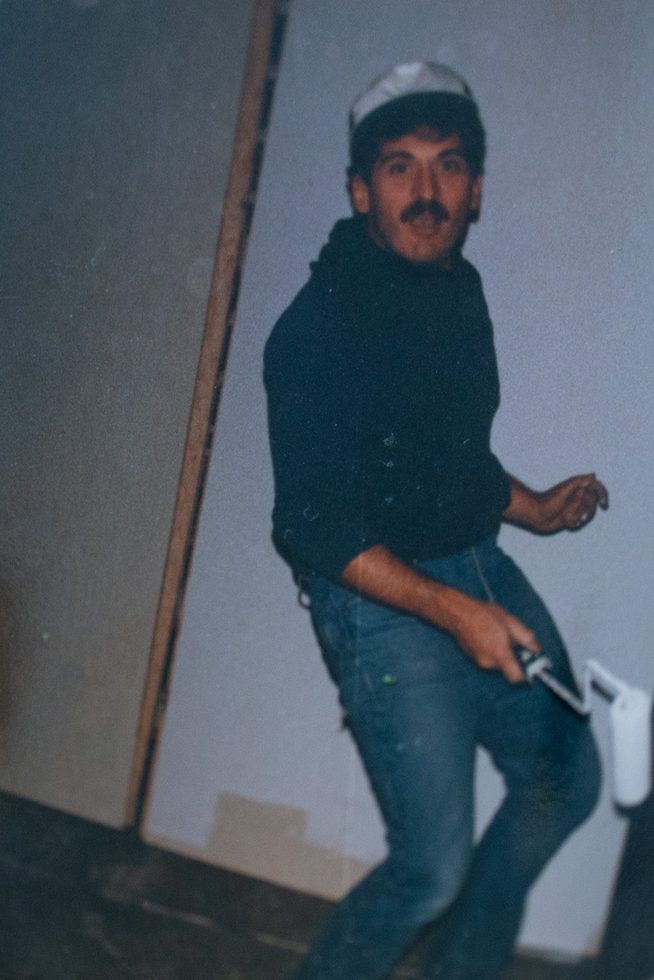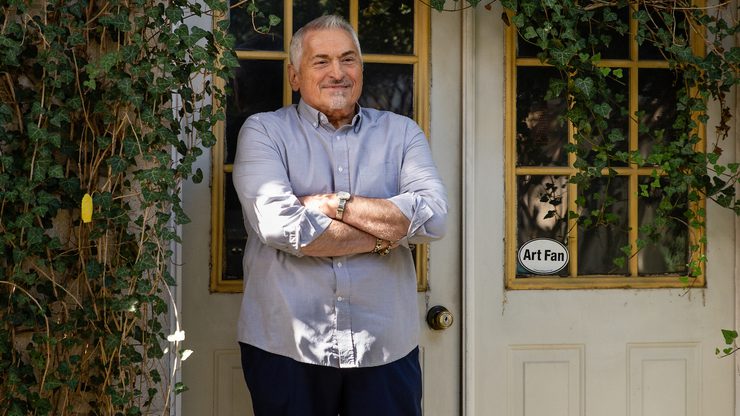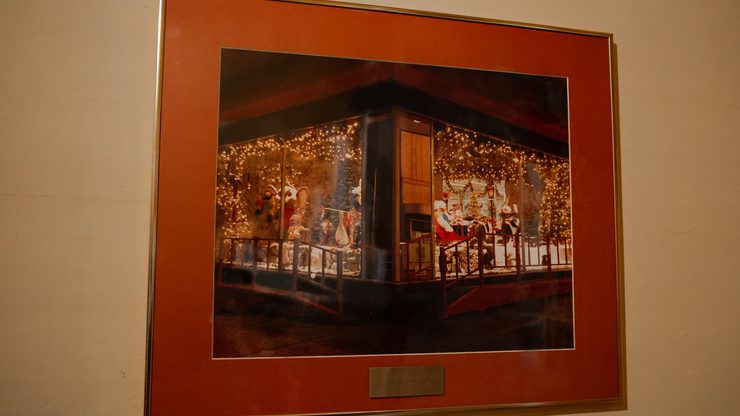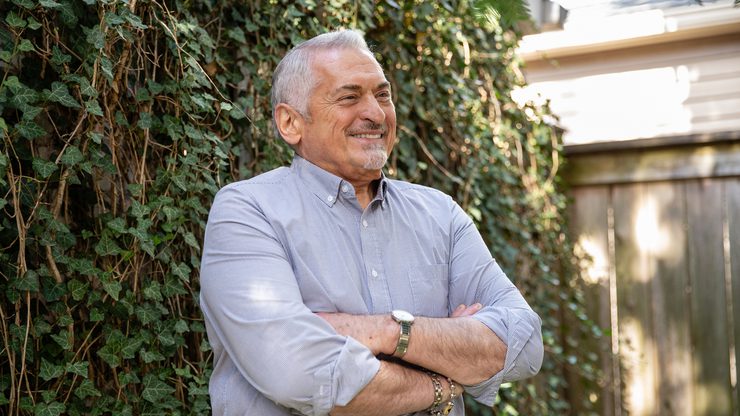
The first time Vince Notaroberto boarded a plane, he was 20 years old and leaving New York for the first time to start classes at Columbus College of Art & Design. His fiercely loving and protective parents wanted him to stay closer to home and their sprawling Italian Catholic family. Wasn’t Pratt Institute right there in Brooklyn, where he’d grown up?
But Notaroberto was ready. For independence, for space, and for new experiences. And ready to discover whether he could safely and freely be himself in this new home. It was 1968, the year before Stonewall. The American Psychiatric Association would not remove homosexuality from its list of mental illnesses until 1973. There were no laws in the United States outlawing discrimination based on sexual orientation; Illinois had repealed its sodomy laws only a few years earlier, in 1962, becoming the first state to do so.
“I was fighting mentally because [I was] different than other people,” Notaroberto says. “And all you ever heard out there was that you’re sick, and that scares you when you’re young. I was the only strange person out there.”
At CCAD, Notaroberto did find other young men like him, gay and struggling to express and live their deeply felt and realized identities. One roommate remains a dear friend to this day, 53 years after they graduated. Notaroberto completed his degree in Advertising & Graphic Design (a program now known as Graphic Design) in 1971 and stayed in Columbus, tracing a thrilling career in retail merchandising design that took him all over the globe. But he never forgot that feeling of leaving New York in search of hope and a new kind of home with chosen family. He wants to make sure CCAD students in the future continue to have those affirming experiences and the support they need, so he has created the Rainbow Endowed Fund, a legacy gift which when endowed will support and enhance a sense of belonging for all students on campus.

These students are our future and our future leaders. We need to invest in them. I know what I went through, and I know they’re going through a lot more,” Notaroberto says.
From CCAD student to designer
Notaroberto thrived at CCAD. He had credits from two years of studying at City College of New York, where he’d built a portfolio that won him admission to three art schools. He had chosen Columbus because he could (in theory, anyway) drive there from New York. He had been accepted to CCAD and schools in Kansas City and California. He ruled out Kansas City and was leaning toward California, but his family balked at the distance from New York. And so did Notaroberto; it was easier to wrap his head around being in Columbus. He could visualize himself here but not the other places.

He remembers taking English classes in the basement of First Congregational Church, which has long been a close neighborhood partner to the college. And he remembers walking a tunnel from Beaton Hall—opened in 1930 specifically for CCAD—to the Columbus Museum of Art for figure drawing classes in the museum basement. He loved many of his instructors, especially Billie Ingram (techniques and figure drawing), David Bahlman (art history), Bill “Vandy” Van de Velde (advertising and lettering), and Jerry Bayless. And he recalls the quiet kindness of longtime Dean Mary Kinney. He learned to draw advertisements by hand and make his work at the drafting table—habits that would evolve along with technology in the span of his career. His art, in pastels, oils and acrylics, was realistic and literal—only very recently has he begun to experiment with more abstract shapes in watercolor. He doesn’t consider himself a great painter, but he enjoys the learning and experimentation process, and watercolors are a new challenge. They require patience—not, in his telling, one of his virtues.
While he was still a student, Notaroberto worked summers as an art therapist of sorts, teaching woodworking to intellectually disabled children at an organization in New York. “I really did like that,” he says. “When I graduated, I thought about maybe getting back into it or other art therapy. What happened was, I had also worked in retail, and I really liked retail. That was another environment that was very accepting. There were quite a few gay people who were retail buyers, assistant buyers. So, I started learning all about retailing. I actually ended up in visual merchandising and store planning.”

Notaroberto went to work for Lazarus, the Columbus department store legendary for its customer service, innovative merchandising, and lavish holiday windows, many of which Notaroberto created in the 1980s. “I did that for five or six years. One year, we did a zoo theme. We were collecting money for zoo donations. I had to go to California to buy the animations,” Notaroberto says. He was given an award of recognition by the city of Columbus for his work that year, 1985. It’s hanging in his living room, with pride of place.
He was promoted into regional merchandising for men’s, home, and children’s sections. He created seasonal shops, like the swimsuit shop. He managed capital budgets for some of his departments. “I loved my job,” Notaroberto says. In a corporate ownership change, his position was moved to Dayton, but Notaroberto declined to follow it. He left Lazarus and took a year off to plan his next move. “Everyone was worried about me, but I said, no, I want this year. This is the only time I could ever do this in my life.”
He was hired by Retail Planning Associates, which later merged with Columbus design firm Fitch. Notaroberto spent considerable time in Helsinki, Finland, during his years at the company. He traveled throughout the United States, too. There were posh hotels. And there were sleepless nights and jet lag. He learned AutoCAD, leaving the drafting table behind. He recalls the ideas that were embraced (retail endcap merchandising) and rejected (too often, the lighting plan for a retail space). It’s been a fascinating, fast-paced journey. “I owe that all to two things. I owe it to Lazarus and I owe that to CCAD,” he says. “It was a great living, and now I’m able to do what I’m trying to do.”
Choosing Columbus for life
Notaroberto found the stability, safety, and camaraderie he craved at CCAD. “We never had any problems, even back then, even though back then [we weren’t] out as much. And it probably was a lot more than what we suspected in my little group,” he says. “It was amazing that we just all clung together. We were good friends.” Those years and relationships at CCAD sowed the seed of the community Notaroberto has grown in the 53 years since he graduated. He is a longtime volunteer at Livingston Methodist Church food pantry and was on the board of the Broad Street Food Pantry for several years. He has been involved with the German Village Society.

Today nearly 60% of CCAD’s student population identifies as LGBTQ+. Those students can access CCAD student services that support health, wellness, and accessibility; join 20+ inclusive student organizations; and participate in events that celebrate and support them. It’s a revelation to Notaroberto.
He at first approached CCAD to make a legacy gift that wouldn’t be directed to any specific program or idea. But after talking to Julia Gourley in CCAD’s Development department about how to make the most impact on students, Notaroberto realized that he could direct his philanthropy toward an aspect of CCAD that was especially close to his heart. And, with an endowed fund, his gift will continue in perpetuity. (And he won’t be the only one funding it—find out how you can contribute to the Rainbow Fund at the bottom of this story.) Once endowed, the fund can support campus services like Student Engagement & Inclusion and the Counseling & Wellness Center, student organizations like the Queer Artists Collective and Student Government Association, and campus events like Lavender Graduation, Queer Prom, Trans Day of Remembrance, or the annual Big Boo drag show.
“I’ve had a good life. I love life,” Notaroberto says. He envisions the Rainbow Fund doing its part to usher CCAD students from a supportive campus community to prepared adulthood. “I would love to see this fund start working and doing things, because you invest in these people. These are our future leaders.”
Make a contribution to the Rainbow Fund by donating here to ensure students are supported for decades to come. If you are interested in making your own legacy gift, reach out to Julia Gourley, Interim Associate Vice President for Development, at [email protected].
To learn more about student life at CCAD, check out our student organizations, services, and event information.
Header Image: Vince Notaroberto has lived in his house, which sits on the line between German Village and Schumacher Place, for 30 years. After graduating from CCAD in 1971 with a degree in Advertising & Graphic Design, he launched a career in retail merchandising and space design and continued to build a community in Columbus.
His kitchen, illuminated with a corner of glass blocks he had installed in a renovation, is lined with displays of Fiestaware, with an emphasis on red, his favorite color.
